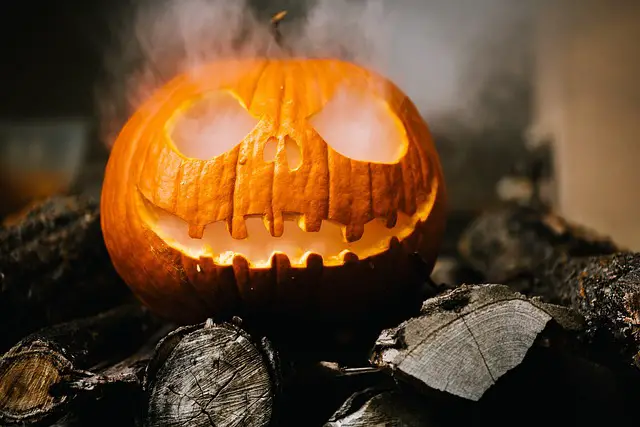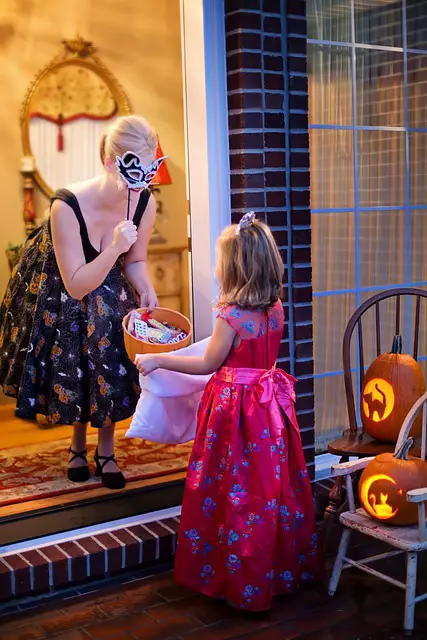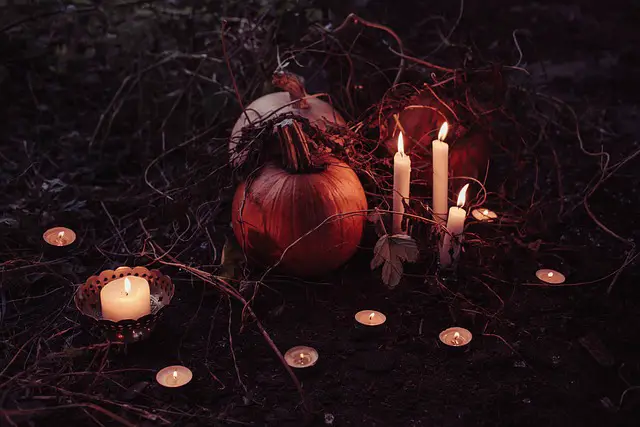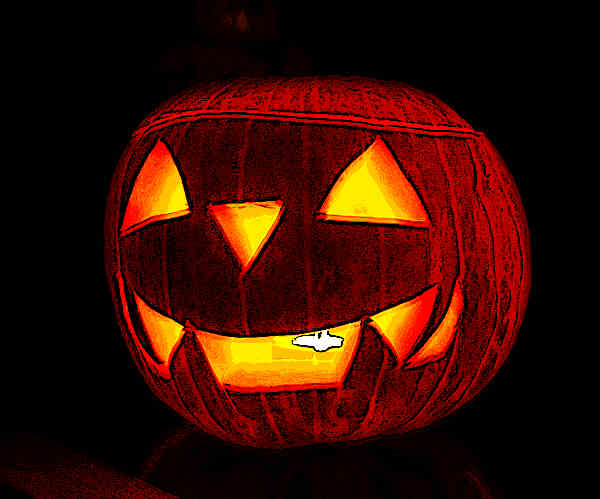Jack-o’- Lantern
Introduction
A carved pumpkin or turnip or other root vegetable illuminated by candles is a Jack-o’-lantern. It is a sign that is commonly associated with Halloween. The icon and its use have Irish origins. Irish immigrants brought this to the United States of America.

Typically, a lid is formed by cutting the top of the pumpkin or turnip in a Jack-o’-lantern.
The flesh present inside is scooped out and a scary funny image is carved. The source of light traditionally is a candle or tea light. Electric lights are also sometimes used. Jack-o’-lanterns are placed on the doorsteps and are a special decoration of Halloween.
Origins in Europe
It is commonly believed that Jack-o’-lantern originated from Ireland. The turnips were carved with grotesque faces and acted as lanterns in the 19th century. In Gaelic regions, Halloween was celebrated with the Samhain festival. It was believed that dead souls returned to the earth at this festival.

Jack-o’-lanterns were said to be the representation of evil spirits. They were also believed to be a tool to turn away evil spirits or supernatural beings. Many other supernatural ideas have been associated with jack-o-lanterns over the years. In Worcestershire, England turnips were carved and were known as “Hoberdy’s Lantern’ at the end of the 18th century.
Tradition in America
Jack-o’-lantern was brought to America by Irish immigrants. The first use of the term carved pumpkin was used in America in 1834. It was then associated with Halloween in the 1st November 1866 edition of Daily News as the records suggest. People used pumpkins as helmets and scared others

The Halloween story ‘The Legend of the Sleepy Hollow’ by Washington Irvin, featuring jack-o-lanterns, became a popular classic in the United States. Today pumpkins are carved and lit for decoration on the occasion of Halloween. Pumpkin-carving competitions and jack-o-lantern themed parties are also arranged.
Stories and Myths about Jack-o’-lantern
Different stories exist as to what jack-o-lantern signifies. One of these says that Stingy Jack was a blacksmith. He met Satan one day and decided to play a trick on him. He tricked the Satan to climb a tree and then placed crosses around the tree to have him trapped there. Another version says that he actually tricked Satan to turn into a coin, then had him shut in his wallet next to a cross.

In both cases, he was later able to negotiate that the Satan would not claim his life. When he died, the Satan couldn’t claim his soul nor could he go to heaven. So he had nowhere to go. Satan helped him mockingly by giving him a coal. Jack put that up inside a carved turnip and now seeks his final resting place. According to folklore, this was why he became known as the jack-o-lantern.
Jack-o’-lantern and Pumpkin art
The tradition of carving pumpkins for jack-o-lanterns has led to the development of pumpkin art. Today, people carve a variety of designs and shaped into pumpkins. A variety of light sources are used to light up hollow, carved-up pumpkins. These include candles, tea lights as well as electric lights.
